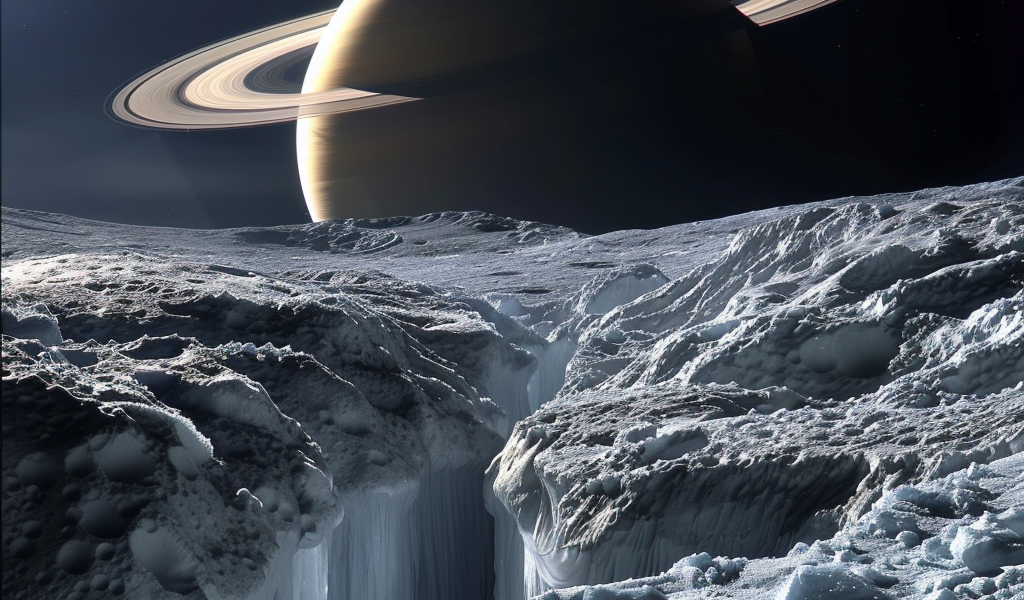In the vast expanse of our solar system, Saturn stands out not just for its stunning rings but also for its remarkable collection of moons. With a staggering 146 known moons, Saturn is home to more natural satellites than any other planet. Among these celestial bodies, one moon has captured the attention of scientists and space enthusiasts alike: Enceladus. This icy moon is particularly intriguing due to its potential to harbor life, making it a focal point for ongoing research in astrobiology.
Enceladus has garnered interest primarily because it is believed to possess a subsurface ocean, which could contain essential molecules for life. The presence of water is a critical factor in the search for extraterrestrial life, and Enceladus appears to have geysers that erupt plumes of water ice into space. These geysers are directly linked to the moon’s subsurface ocean, providing a unique opportunity for spacecraft to analyze these ejected materials for signs of life.
Recently, researchers have identified a peculiar phenomenon on Enceladus: a mysterious dark spot that seems to be disappearing. This enigmatic feature has piqued the curiosity of scientists, who are eager to understand its nature and implications. The dark spot was a major talking point at the 2024 American Geophysical Union meeting held in Washington, D.C., where experts gathered to discuss their latest findings and theories about various cosmic phenomena.
Cynthia B. Phillips, a planetary geologist at NASA’s Jet Propulsion Laboratory, presented her team’s findings regarding this unusual dark spot. During her presentation, she detailed the meticulous process that led to the identification of this feature. By analyzing numerous pairs of images captured by the Cassini spacecraft, scientists discovered the dark spot’s intriguing characteristics.
The dark spot’s disappearance raises questions about its origin and significance. Scientists speculate that it might be related to the geysers and the underlying ocean. The potential connection between this dark spot and the plumes of water ice could provide valuable insights into the moon’s geological activity and its capacity to support life.
Enceladus is not the only moon that has sparked interest in the search for extraterrestrial life. Other celestial bodies, including Europa, one of Jupiter’s moons, are also considered prime candidates due to their subsurface oceans. However, Enceladus’s unique features, such as its active geysers and the potential for direct sampling of its plumes, make it an exceptional target for future exploration.
As the scientific community continues to study Enceladus, the hope is that this moon will reveal more secrets about the conditions necessary for life beyond Earth. The ongoing analysis of the dark spot and its implications for the moon’s geology and potential habitability could lead to groundbreaking discoveries in the field of astrobiology.
The exploration of Enceladus is part of a broader effort to understand the complexities of our solar system and the potential for life beyond our planet. As technology advances and new missions are planned, scientists remain optimistic about the possibilities that lie ahead in the quest to uncover the mysteries of the universe.
In summary, the disappearing dark spot on Enceladus adds another layer of intrigue to this already fascinating moon. With its potential to harbor life and the ongoing research efforts, Enceladus continues to be a beacon for scientists looking to answer one of humanity’s most profound questions: Are we alone in the universe?





